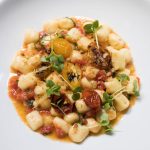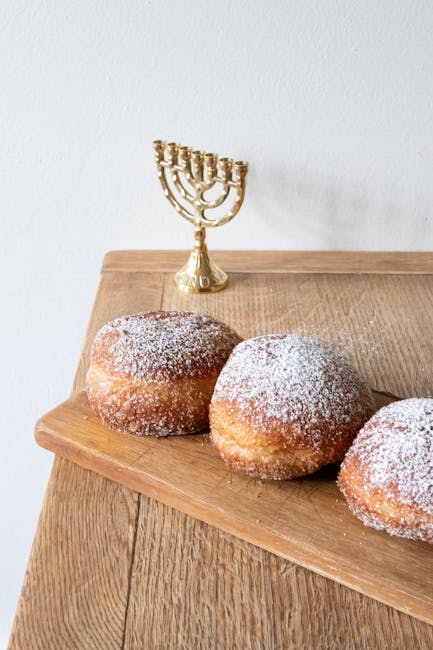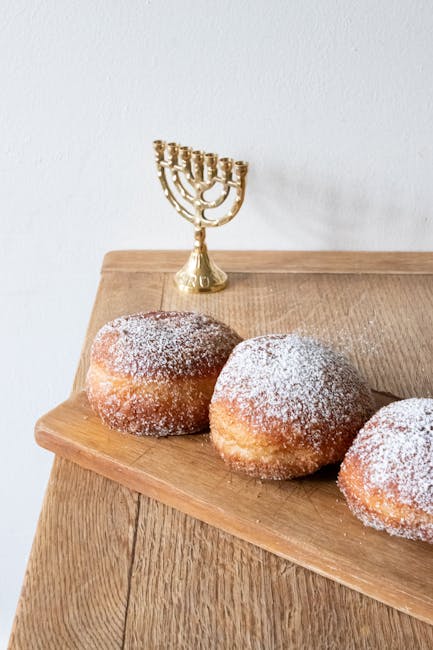Homemade British Shepherd’s Pie is a comforting classic, a dish deeply rooted in British culinary history and a testament to the resourceful use of readily available ingredients. Its origins are somewhat hazy, with no single inventor or precise date of creation. However, the dish’s core components – a hearty meat base typically featuring lamb or minced beef, topped with a creamy mashed potato crust – suggest a history stretching back centuries. The use of minced meat points to a development likely post-industrial revolution, when mass-produced minced meat became more accessible to the average household. The Shepherd’s in the name is a relatively recent addition, reflecting a perceived association with the pastoral life and the traditional use of lamb. While the precise origins remain elusive, the dish’s enduring popularity speaks volumes about its place in British culture.
The cultural significance of Shepherd’s Pie extends beyond its simple ingredients. It represents a quintessential example of British comfort food, a dish associated with warmth, family, and home-cooked meals. Surveys consistently rank Shepherd’s Pie among the most popular dishes in the UK, with estimates suggesting it’s featured in over 80% of British households at least once a year. This widespread popularity is partly due to its versatility; it’s easily adaptable to different tastes and dietary requirements, with variations incorporating vegetables, different meats, or even vegetarian alternatives. Its affordability and relative ease of preparation also contribute to its enduring appeal across various socioeconomic groups. It’s a dish that transcends class and regional boundaries, finding a place on tables from humble cottages to grand manor houses.
Interestingly, the name itself is a subject of debate. While commonly referred to as Shepherd’s Pie, the use of beef instead of lamb leads to the equally acceptable – and sometimes preferred – term Cottage Pie. This distinction, while seemingly subtle, highlights the dish’s evolution and adaptability. The use of Shepherd’s Pie specifically for a lamb-based version isn’t universally agreed upon, demonstrating the ongoing fluidity of culinary traditions. Regardless of the precise name, the underlying principle remains the same: a delicious, satisfying meal made from simple, wholesome ingredients. The homemade version, in particular, allows for a personalized touch, enabling cooks to experiment with herbs, spices, and vegetables, creating their unique and cherished family recipes. This adaptability ensures that Shepherd’s Pie continues to evolve, remaining a vital part of the British culinary landscape for generations to come.
Ingredients and Measurements
This recipe yields a classic British Shepherd’s Pie, serving 6-8 generously. Accurate measurements are crucial for achieving the perfect texture and flavour balance. We’ll be using both metric and imperial measurements for your convenience.
For the Meat Filling:
- 1.5 kg (3 lbs) Minced Beef: Use a good quality, 80/20 blend for optimal flavour and moisture. Avoid extra-lean mince as it can become dry during cooking. Tip: Gently browning the mince in batches ensures even cooking and prevents it from steaming.
- 1 large Onion (approximately 200g): Finely chopped. A good quality onion adds significant sweetness and depth to the flavour. Recommendation: Use a sharp knife to finely dice the onion for even cooking and to prevent large chunks from remaining.
- 2 Carrots (approximately 200g): Peeled and diced into small pieces (approximately 5mm). Carrots add both sweetness and color to the filling. Tip: Dicing them small ensures they cook evenly alongside the meat.
- 2 Celery Stalks (approximately 100g): Finely diced. Celery adds a subtle earthy flavour that complements the beef beautifully. Recommendation: Use fresh celery for the best flavour.
- 3 cloves Garlic: Minced or crushed. Garlic adds a pungent aroma that enhances the overall taste of the filling. Tip: Don’t be shy with the garlic – it’s a key ingredient in bringing the flavours together.
- 40g (1 ½ oz) Plain Flour: Used as a thickening agent for the sauce. Recommendation: Use all-purpose flour; it works best in this recipe.
- 700ml (2 ½ cups) Beef Stock: Use a good quality beef stock for the best flavour. Tip: Homemade beef stock is ideal, but a good quality store-bought version is perfectly acceptable.
- 1 tbsp Tomato Puree: This adds a touch of sweetness and acidity to balance the richness of the beef. Recommendation: Use a good quality tomato puree, not paste.
- 1 tsp Dried Thyme: Thyme complements the beef beautifully. Tip: Fresh thyme can also be used (approximately 1 tbsp).
- 1 tsp Dried Rosemary: Rosemary adds another layer of flavour complexity. Recommendation: Use dried herbs for a more consistent flavour profile.
- Salt and freshly ground Black Pepper: Season generously to taste throughout the cooking process.
For the Potato Topping:
- 1 kg (2 lbs 3 oz) Potatoes: Use floury potatoes like Maris Piper or King Edward for the best texture. Tip: Choose potatoes of similar size for even cooking.
- 50g (2 oz) Butter: Adds richness and flavour to the mashed potatoes.
- 100ml (⅓ cup) Milk or Cream: Use full-fat milk or double cream for extra richness. Recommendation: Warm the milk/cream slightly before adding to the mashed potatoes for a smoother consistency.
- Salt and freshly ground Black Pepper: Season generously to taste.
Preparation of Vegetables
The success of a truly delicious Shepherd’s Pie hinges significantly on the quality and preparation of the vegetables. We’ll be focusing on carrots, peas, and onions, a classic combination that provides both sweetness and heartiness to the filling. Begin by gathering your ingredients: 2 large carrots (approximately 200g), 1 large onion (approximately 150g), and 150g of frozen peas. You can, of course, adjust these quantities to your preference, but this recipe provides a good balance of flavors.
First, prepare the carrots. Peel the carrots using a vegetable peeler, ensuring you remove all the outer skin. Then, wash them thoroughly under cold running water to remove any lingering dirt or debris. Precise cutting is key for even cooking. Use a sharp knife to chop the carrots into small, roughly ½-inch (1.25cm) pieces. Uniform size ensures they’ll cook at the same rate, preventing some from being mushy while others remain crunchy.
Next, tackle the onion. Peel the onion by removing the outer layers. Again, a sharp knife is essential for efficient and safe preparation. Finely chop the onion. Avoid overly small pieces, as this can lead to a burning or overly strong onion flavor. Aim for roughly ¼-inch (0.6cm) pieces. The texture of the onion should remain slightly firm even after cooking.
Now, let’s address the peas. Since we are using frozen peas, there’s less preparation involved. However, it’s crucial to ensure they are thoroughly thawed before adding them to the filling. Rapidly thawing them in a microwave for a minute or two, or allowing them to defrost naturally in the refrigerator overnight is recommended. Avoid using peas directly from the freezer, as this will significantly lower the overall temperature of the filling and extend cooking time, potentially affecting the texture of the other vegetables and the meat.
Once all the vegetables are prepared, you’re ready to move on to the next stage of the recipe. Remember, consistent and accurate measurements are essential for achieving the perfect balance of flavors and textures in your Shepherd’s Pie. Proper vegetable preparation not only affects the taste but also the overall cooking time and consistency of the filling. Taking the time to carefully chop the vegetables will reward you with a significantly more flavorful and visually appealing finished dish.
Professional Tip: For an extra layer of flavour, consider lightly sautéing the onions and carrots in a little butter or oil before adding them to the meat filling. This will caramelize the vegetables, creating a deeper, richer taste that enhances the overall flavour profile of your Shepherd’s Pie.
Meat Preparation and Browning
The foundation of a truly delicious Shepherd’s Pie lies in the perfectly prepared and browned meat. We’ll be using approximately 500g of minced lamb for this recipe, but you can adjust according to your needs and the size of your dish. Choosing a good quality, preferably lean, lamb mince is crucial for flavour and texture. Avoid overly fatty mince, as excess fat will render out during cooking, making the filling greasy.
Begin by preparing your ingredients. Peel and finely chop one large onion (approximately 200g). You can also add other vegetables at this stage for extra flavour and depth, such as finely diced two carrots (100g) and two celery stalks (100g). These should be chopped into similarly sized pieces to the onion to ensure even cooking.
Heat a large, heavy-bottomed pan or Dutch oven over medium-high heat. A heavy pan is vital for even browning and prevents sticking. Add a generous glug of vegetable oil (approximately 2 tablespoons). Avoid using olive oil at this stage, as its lower smoke point may cause it to burn. Once the oil is hot, add the minced lamb to the pan. Do not overcrowd the pan; work in batches if necessary to ensure proper browning. This is crucial for developing rich flavour and texture.
Using a wooden spoon or spatula, break up the mince and spread it evenly across the pan’s surface. Allow the lamb to brown undisturbed for a few minutes before stirring. This initial browning step helps to seal in the juices and develop a deeper, richer flavour. Continue to stir and break up any clumps, ensuring all sides of the mince are nicely browned. This should take approximately 8-10 minutes.
Once the lamb is browned, add the chopped onion, carrots, and celery to the pan. Stir well to combine with the meat. Cook for another 5-7 minutes, or until the vegetables have softened slightly and begun to caramelize. Don’t be afraid to let the vegetables brown a little; this adds to the overall flavour complexity.
Season generously with salt and freshly ground black pepper. A pinch of dried thyme or a sprig of fresh rosemary also works wonders in complementing the lamb. Stir well and continue to cook for a further 2-3 minutes, allowing the herbs to release their aroma.
At this stage, you can deglaze the pan. Add a splash of red wine (approximately 100ml) or beef stock to the pan, scraping up any browned bits from the bottom. This adds depth of flavour and ensures none of the delicious caramelization is wasted. Simmer for a few minutes, allowing the liquid to reduce slightly and thicken the sauce.
Important: Always ensure the meat is thoroughly cooked before proceeding with the rest of the recipe. The internal temperature of the lamb should reach at least 70°C (158°F).
Sauce Preparation
The success of a truly delicious Shepherd’s Pie hinges significantly on the richness and flavour of its gravy. This section details the process of creating a deeply savoury sauce that perfectly complements the lamb mince and fluffy mashed potato topping.
We’ll start with the foundational elements: 50g of butter and 50g of plain flour. These are the building blocks of a classic roux, the thickening agent for our sauce. Begin by melting the butter in a large, heavy-bottomed pan over a medium heat. Ensure the butter is fully melted and shimmering but not browned. This prevents a burnt flavour in the final sauce.
Once melted, gradually whisk in the flour, ensuring there are no lumps. This is crucial. Work diligently to create a smooth, consistent paste. Continue whisking for approximately 2-3 minutes, allowing the mixture to cook gently. This process, known as ‘cooking out the flour’, is essential to eliminate the raw flour taste. The roux should take on a pale, sandy colour.
Now, for the liquid element. Gradually whisk in 500ml of good quality lamb stock. This is where the flavour really comes to life. Using homemade stock is ideal, but a good quality store-bought alternative will also suffice. Pour the stock slowly, whisking continuously to prevent lumps from forming. Work quickly and thoroughly to ensure a smooth, lump-free consistency. Avoid adding the stock too quickly, as this can result in a lumpy sauce.
Once all the stock is incorporated, bring the mixture to a gentle simmer, stirring occasionally. Reduce the heat to low and allow the sauce to simmer gently for approximately 10-15 minutes, stirring occasionally. This will allow the flavours to meld and the sauce to thicken further. Do not let the sauce boil vigorously, as this can cause it to split. The sauce should coat the back of a spoon smoothly.
To enhance the depth of flavour, we will add further ingredients. Stir in 1 tablespoon of tomato purée for a touch of sweetness and acidity. Then, add 1 teaspoon of Worcestershire sauce for a savoury umami note. A teaspoon of dried thyme will add a subtle herbal complexity. Finally, season generously with salt and freshly ground black pepper to taste. Adjust the seasoning according to your preference. Taste the sauce and adjust the seasoning as needed. Remember, the sauce should be well-seasoned, as it forms the base of the Shepherd’s Pie.
Once the sauce has reached your desired consistency and flavour, remove it from the heat and set aside. This rich and flavourful sauce is now ready to be combined with your cooked lamb mince, creating the heart of your delicious homemade Shepherd’s Pie.
Assembly of the Shepherd’s Pie
With your flavorful meat filling and creamy mashed potato prepared, it’s time to assemble your Shepherd’s Pie. This stage is crucial for achieving a perfectly textured and visually appealing dish. Begin by preheating your oven to 375°F (190°C). This ensures the filling is thoroughly heated through and the topping achieves a beautiful golden-brown crust.
Transfer the prepared meat filling into a suitable ovenproof dish. A 9×13 inch baking dish is ideal for a standard recipe, but you can adjust the size depending on your yield. Ensure the filling is evenly distributed across the base of the dish, creating a relatively even layer, approximately 1-1.5 inches deep. If the filling is particularly juicy, consider gently draining off excess liquid before transferring it to the dish. This prevents a soggy bottom.
Next, we move to the star of the show – the mashed potato topping. Spoon the mashed potato evenly over the meat filling, spreading it out to cover the surface completely. Aim for a consistent thickness of about ½ inch. A spatula or the back of a large spoon works well for this. Don’t press down too hard; you want the topping to remain fluffy and light, not dense and compacted. A slightly uneven surface adds rustic charm, but strive for general consistency.
For a truly impressive finish, consider creating a decorative pattern on top of the mashed potato. You can use a fork to create ridges, or a piping bag with a star nozzle for a more elegant look. Alternatively, a simple, smooth surface is perfectly acceptable and equally delicious. The choice is yours!
For an extra layer of flavour and a crispier topping, you can brush the mashed potato with a little melted butter or milk. This will add richness and create a beautiful golden-brown crust during baking. Be careful not to overdo it, as excessive liquid can lead to a soggy top.
Place the assembled Shepherd’s Pie in the preheated oven and bake for approximately 30-40 minutes, or until the topping is golden brown and the filling is bubbling hot. The exact baking time will depend on your oven and the depth of your dish; check for doneness by inserting a knife or skewer into the center of the filling – it should be piping hot. If the topping starts to brown too quickly, loosely cover it with foil to prevent burning.
Once cooked, remove the Shepherd’s Pie from the oven and let it rest for 10-15 minutes before serving. This allows the filling to settle and makes it easier to serve without the filling spilling out. Serve hot, perhaps with a side of steamed green vegetables for a complete and balanced meal.
Baking Instructions
Preheat your oven to 200°C (180°C fan/Gas Mark 6). This ensures the filling cooks thoroughly and the topping achieves a beautiful golden-brown crust. Using a fan oven may require slightly adjusting the temperature or baking time; keep a close eye on your pie.
Transfer the assembled shepherd’s pie to a large, oven-safe baking dish. Choose a dish that’s approximately 2-2.5 litres in capacity to comfortably accommodate the filling and prevent overflow during baking. A deeper dish is preferable to ensure even cooking.
Before placing the pie in the oven, lightly brush the top of the mashed potato with milk or cream. This adds richness and helps create a lovely, glossy finish. You can also sprinkle a little grated cheese (such as mature cheddar) over the top for extra flavour and a pleasing visual appeal.
Bake for approximately 35-45 minutes, or until the filling is bubbling and the topping is golden brown and slightly crisp. The baking time may vary depending on your oven and the size of your dish. Start checking for doneness around the 30-minute mark. Insert a skewer or knife into the thickest part of the filling; it should come out clean.
If the topping starts to brown too quickly before the filling is cooked through, you can loosely cover the pie with a sheet of foil. This will prevent burning while allowing the filling to continue cooking. Remove the foil during the last 10-15 minutes of baking to allow the top to brown properly.
Once cooked, remove the shepherd’s pie from the oven and let it rest for at least 10-15 minutes before serving. This allows the filling to set slightly and makes it easier to serve. Resting also helps the flavours meld together, enhancing the overall taste experience.
Important Note: Oven temperatures can vary, so it’s crucial to monitor your shepherd’s pie closely during baking. If the top is browning too quickly but the filling isn’t cooked through, reduce the oven temperature slightly and continue baking. Conversely, if the top isn’t browning sufficiently, you may need to increase the temperature slightly during the last few minutes of baking.
For a truly impressive presentation, you can use a piping bag to create decorative swirls on top of the mashed potato before baking. This adds a touch of elegance to your homemade shepherd’s pie. Alternatively, you can simply use a fork to create a rustic, textured surface.
Enjoy your delicious homemade British Shepherd’s Pie! Serve hot, ideally with a side of fresh green vegetables such as peas or green beans.
Recommendations for Homemade British Shepherd’s Pie
This recipe for Homemade British Shepherd’s Pie is designed to be a hearty and satisfying meal, perfect for a chilly evening. To maximize your enjoyment and ensure the best possible outcome, please consider the following recommendations:
Serving Suggestions: For a truly classic experience, serve your Shepherd’s Pie piping hot, straight from the oven. A simple green salad, perhaps with a light vinaigrette, provides a refreshing contrast to the richness of the pie. Alternatively, steamed green beans or broccoli offer a healthy and flavorful side. Consider adding a dollop of creamy horseradish or a sprinkle of fresh parsley before serving for an extra touch of flavor and visual appeal. For a more substantial meal, serve with crusty bread to soak up the delicious gravy.
Storage and Reheating: Leftover Shepherd’s Pie can be stored in an airtight container in the refrigerator for up to 3 days. To reheat, you can either microwave individual portions until heated through, or gently reheat in the oven at a low temperature (around 350°F/175°C) until warmed through and bubbly. Avoid over-reheating, as this can dry out the filling and make the topping tough.
Complementary Dishes: The versatility of Shepherd’s Pie allows for many delicious pairings. A simple side of mashed potatoes, while redundant, may be preferred by some for a more intense potato experience. A light and tangy coleslaw would balance the richness of the pie. For a more sophisticated pairing, consider serving it with a roasted root vegetable medley, such as carrots, parsnips, and sweet potatoes. A side of pickled onions adds a sharp and contrasting flavor.
Nutritional Information (per serving, approximate): The nutritional content of your Shepherd’s Pie will vary depending on the specific ingredients used and portion sizes. However, a typical serving is likely to contain approximately 500-600 calories. This includes a significant amount of protein from the lamb mince, carbohydrates from the potatoes and vegetables, and fats from the meat and butter. The exact breakdown of macronutrients will depend on the recipe variations. Please note: This is an estimate, and it is recommended to use a nutritional calculator with your specific ingredients for a more accurate analysis.
Tips for Success: To achieve the best results, ensure your lamb mince is well-browned before adding the other ingredients. Don’t overcook the vegetables, as this will make them mushy. For a crispier topping, you can brush the mashed potato with a little milk or butter before baking. Experiment with different herbs and spices to create your own unique flavor profile. Consider adding a splash of Worcestershire sauce or red wine to the meat mixture for extra depth of flavor.
Important Note: Always ensure that your lamb is cooked to a safe internal temperature of 160°F (71°C) to prevent foodborne illness. Adjust cooking times as needed, depending on your oven and the size of your dish.





